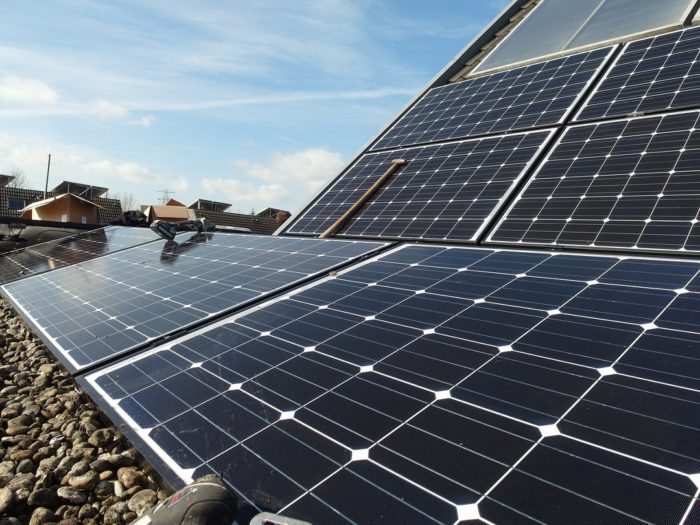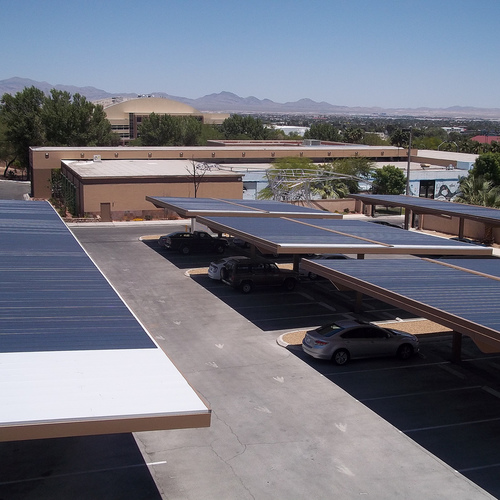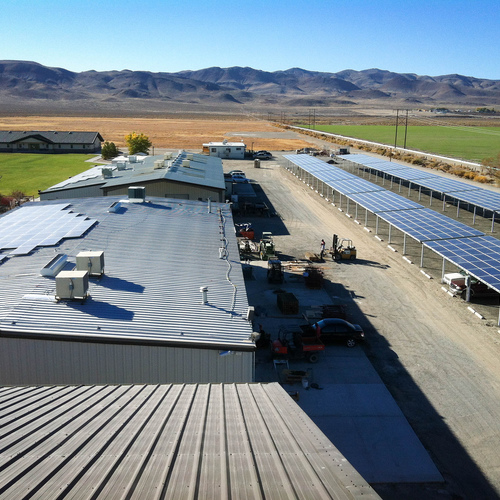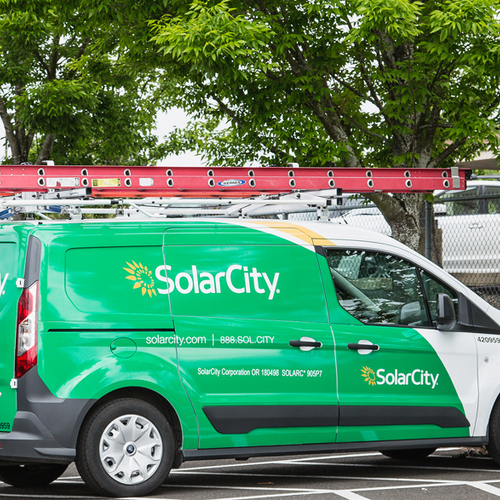
Image Credit: Coffee / CC0 via Pixabay
Nevada’s utility regulators have taken another swing at net-metering rules for residential solar customers, reversing an earlier decision and restoring more attractive rates to those in the northern part of the state.
In a draft order approved late last month, the Public Utilities Commission of Nevada voted unanimously to restore retail net-metering reimbursements for new solar customers in NV Energy’s Sierra Pacific Power Company service area, up to a cap of 6 megawatts.
It’s the latest move in what has become a year-long tussle between regulators, NV Energy and solar advocates over the monthly rates that solar customer pay, and the amount of money they earn for supplying the grid with electricity from their home photovoltaic systems.
The latest ruling is likely to get the solar industry moving again in northern Nevada, even if it leaves long-term policy undecided. The December 22 rule says that opening up as much as 6 megawatts of rooftop solar capacity for new and existing customers in the Sierra Pacific service area under old net-metering rules is “just, reasonable, and consistent with the public interest.”
Regulators said that allowing more solar customers on the grid would decrease rates for the average residential customers in northern Nevada by a penny a month, and reduce the average bill for a small commercial customers by 43 cents.
“It is not much,” the draft order concedes. But the slightly lower rates are evidence there will be no “unreasonable” cost shift between customer classes. “[Net-energy metering] may grow,” the order says, “while average bills should not.”
New solar customers covered by Nevada Power, the much larger NV Energy service area in the south, however, are still stuck with service charges and net-energy metering (NEM) rates that won’t make solar very attractive.
“Resolution of valuation of NEM issues in Nevada requires more study and collaboration,” the order says. “But the policy of the State of Nevada clearly supports the development and growth of diverse forms of solar and renewable energy as a priority, including NEM.”
Disruption started a year ago
At the end of 2015, regulators approved a plan from NV Energy to triple the monthly service charges for solar customers — to $38.51 per month — while reducing the amount paid for excess solar electricity from 9.1 cents to 2.6 cents per kilowatt hour. The new plan was to be phased in over a period of years.
The new rate structure did not grandfather existing solar customers, and that made a lot of people unhappy. It was apparently the first time that a utility had succeeded in imposing new rules on existing solar customers, who had invested in systems under much more favorable terms. With lower reimbursements, solar customers faced longer paybacks for their investments. Installers worried that customers would default on their power purchase agreements.
Nevada became one of the most closely watched solar battlegrounds in the country. SolarCity and Vivint, the two biggest solar installers, said they’d halt sales there and SolarCity went as far as to shutter a just-opened training center for solar workers in Las Vegas.
The phase-in for new rates was extended in another ruling by the Public Utilities Commission in February, and then in September of last year, retail net-metering was restored for all of the state’s existing 32,000 solar customers. Anyone who had applied to install a solar system by the end of the year would be grandfathered for the next 20 years.
But those applying to become solar customers after January 1, 2016 in the southern part of the state — the Nevada Power area — are still subject to climbing monthly charges and sinking reimbursements. Not much appears to have changed for the largest group of Nevada rate payers.
Ruling seems to point to a change of heart
The significance of the most recent PUC ruling probably lies with the change of heart it signals, not with the number of customers it directly affects now.
In looking back at the aftermath of earlier rulings, the PUC acknowledges that its order of February 2016 “all but crushed the rooftop solar industry in Northern Nevada, reducing the booming industry from 983 applications by residential homeowners and small commercial businesses in Sierra Pacific Power service territory in 2015 to 41 applications in 2016.”
“The landscape on these issues continues to grow,” the draft order continues. “Abraham Lincoln once said that ‘[b]ad promises are better broken than kept.’ The PUCN’s prior decisions on NEM, in several respects, may be best viewed as a promise better left unkept. The PUCN is free to apply a new approach.”
Nevada Power will be subject to new rate hearings this year, with a decision expected by the end of December. Customers in that service area can hope that the PUC extends its thinking on net-metering to them. “The PUC seems open to fixing this in the future,” a person familiar with the proceedings said. “This is a symbolic victory for solar.”
Still up in the air is what happens to new solar customers in the Sierra Pacific service area once the region hits the just approved cap: 6 MW of installed capacity should be enough to take care of 1,000 to 1,500 customers. After that, who knows?
Weekly Newsletter
Get building science and energy efficiency advice, plus special offers, in your inbox.















15 Comments
Needs to be locked in
This won't restart the industry, even in the North, unless the new policy is locked in for a long enough period. I certainly wouldn't invest in residential solar based on a policy that can be so easily reversed the next time PUCN has a change of heart.
Sounds like a lesson for net
Sounds like a lesson for net metering residential solar everywhere. A long term investment decision should be backed up by a long term contract with the utility - not an assumption that today's policies will continue.
IMO, there should be more cost incentives for everyone to time shift electrical loads away from the evening hours. This will allow more solar with an equivalent amount of grid stress.
Most states don't stab early adopters in the back. @ JonR
The utilities aren't generally in the business of signing long term contracts with pipsqueak generators- the remuneration terms are almost universally established by state regulatory bodies.
In the case of NV, the miniscule size of the PUCN regulatory body (just three lonely commissioners, and a chairperson, thatzit!) made it pretty easy to go astray with the lack of guidance provided by the legislature who pushed the reform onto the PUCN's plate. By refusing to grandfather existing systems, and refusing to assign ANY value to the majority of the valuation criteria they were supposed to be working with they totally screwed up. It had the feel of spite, given that they didn't have time or resources to do the full evaluation, they called any unknowns $0. That was (obviously) not the result the legislators had intended.
New York is completely upending the regulatory applecart to allow greater degrees of competition for all sorts of grid services, not just energy. That includes automated demand response, time shifting, etc, and it is allowed to be grid-location specific- eg: storage & generation & frequency control on some sides of the substation has greater value than on others. By being able to make different deals for those resources based on location Con Ed is saving the ratepayers over a billion dollars in avoided cost by deferring or eliminating upgrades to the the Brooklyn Queens substation. The New York model is still a work in progress and evolving rapidly, but I expect several northeastern states to follow suit.
Serious Question
Why should solar customers be able to sell excess power back to the utilities at all let alone at times that are outside peak demand?
Response to John Clark
John,
Because most of the time, when a solar customer sells excess power to the utility, it's a win-win-win situation: the owner of the PV array wins, because the power isn't wasted and the owner gets a credit; the utility wins, because the utility avoids the cost of building a generating plant; and the planet wins, because such a sale often lowers CO2 emissions from a generating plant.
We have all kinds of
We have all kinds of regulations that benefit the environment but cause cost increases for various parties. I don't think that residential solar should be singled out with a requirement that it be cost neutral or positive.
No doubt that creating certainty in residential net-metered solar investment decisions will have to come from regulatory bodies.
@Martin. Understood. In my opinoin the business model
is downright scary since it relies upon gov't largesse.
I could possibly understand a case to be made for selling power back to utilities at times of peak demand via depletion of stored electricity (ex. Tesla Power wall), but during off peak times it just doesn't pass the sniff test.
during off peak times the
during off peak times the utility still has to generate that electricity; it doesn't have some magic source that runs all the time at no cost. (that would be "renewables") If the usage - even during off peak - decreases, the utility can scale back the gas or oil that is fueling their generation facilities and produce less electricity and utilize the renewables, thereby decreasing the use of fossil fuels.
Why would you think this would only work during periods of peak power?
What is happening across the
What is happening across the world is that more renewables are generating power that is being used by the utilities and they are relying less and less on their fossil fueled power plants. The power plants, not receiving enough money to keep operating are shutting down. The utilities, relying on selling the power produced from these plants, are losing revenue from these plants and are having financial problems. Their reaction - to try to stop renewables - will work as well as the wagon companies who tried to keep motorized vehicles off the roads. Not a good long term strategy; especially when the fuel is free.
Combining time of use rates and net metering
John Clarke is correct that power provided to the utility by home owners has much greater value to the utility at peak times than at non-peak times. As Bob Irving points out, the value is not zero even at non-peak times. This difference is best addressed by time of use rates rather than by restricting net metering.
In Michigan, the utilities make people choose between net metering and time of use rates. One utility prohibits net metering customers from being on time of use rates. The other utility allows it but makes it a bad deal. In my opinion, it would make more sense to force net metering customers onto time of use rates rather than to prohibit it. I have no idea whether utilities elsewhere allow customers to combine these programs.
Since utility scale solar is
Since utility scale solar is more cost effective, is there any public policy reason to encourage additional residential solar?
Who says it's more cost effective? @ JonR
Utility scale PV is cheaper per installed watt, but that's different from being more cost effective. Utility scale solar requires a lot of grid infrastructure & control to get the power from the array to the load. Behind the meter PV at the load site relieves the grid infrastructure of load, and critically, peak load relief. Reducing the grid congestion and freeing up peak grid capacity with PV is now in many instances cheaper than building out more grid infrastructure.
This is playing out big-time in Australia, where they have arguably over-built the grid capacity under previous regulatory frameworks which has increased the retail price to the ratepayers, to where PV (even when NOT net-metered) is something of a no-brainer investment. With the increasing rate of small scale distributed solar the average grid loads and grid peaks are shrinking- they have more transmission and distribution grid capacity than is actually needed now, and likely more capacity than will EVER be needed, but that grid infrastructure still needs to be paid for. Even without outright grid defection (which is already financially rational in some parts of Australia), the amount of LOAD defection from behind the meter PV and smart controllers on hot water heaters to limit un-compensated barely remunerated exports to the grid is accelerating. Attempts to recover the cost of the over-built grid by increased fixed connection fees will fail, since that makes snipping the cord and going off-grid even more financially attractive. Batteries & PV both have double-digit learning curves, and the installed base is doubling fast.
New York is now taking a smarter approach, trying to stay ahead of the curve on these issue and allowing distributed resources to compete directly against grid infrastructure upgrades rather than the traditional guaranteed return on investment of utility owned & built infrastructure upgrades that has been the standard for about a century. Simply building out the grid with more transmission, distribution, and generators worked for the large centralized generator & grid with one-way power flows, but there isn't a sufficient economy of scale to make centralized utility scale PV more economic than behind the meter PV, due to the grid cost problem. It's on the edge right now, but at the rate pricing is falling for small scale PV it would be insane to be only building large central solar farms.
There was a case in Michigan
There was a case in Michigan (?) a couple of years ago where a major utility requested bids on a new power plant; they received several, all but one were gas plants. The one they signed was a 100MW PV system which instead of a large centralized arrays, had a number of smaller installations which would feed directly into local grids so they would not require major new grid structure or expansion of lines.
Makes sense.
The grid has to
Makes sense.
The grid has to be (and in most cases, already is) built for worse case loads. Fail to do this and what happens when:
a) power is restored after a failure and it takes 5 minutes before residential grid-tie inverters come online.
b) it's a peak load summer afternoon and clouds move in. Thermal mass in the buildings causes AC to continue to run.
Both are fixable - and beneficial even without residential solar.
Clouds are a bigger problem at utility scale
a) Widely distributed PV can't all go down at once with a cloud moving through, but a 100MW+ solar farm can. The difference is the size of the geographical areas involved.
It doesn't take 5 minutes for grid tie inverters to come up anyway, and the amount of grid disturbance ride-through is software adjustable. After analyzing big data sets from Enphase's distributed inverters in Hawaii to try to understand distribution grid disturbances suspected to be from backfeeding PV it turned out that the PV was in fact stabilizing the detected disturbances, and that with some software tweaks could stabilize it even further. (A similar situation with wind farm ride-through algorithms became an issue in Australia in the past few months when large transmission connections were taken down by strong winds causing a blackout. Had more of the wind farms had been programmed for higher ride through fewer people would have been left in the dark, as the contracted-for dark start services from gas generator operators failed to perform.)
Controlling voltage & frequency at the distribution grid level is superior to trying to do it all at the transmission grid level.
b) Part of the New York regulatory revisions is to allow demand response aggregators to bid into both frequency & voltage stabilization markets, as well as the raw demand. FERC Order 745 was upheld by the Supreme Court last year which requires that demand response be allowed to bid into peak power markets. The PJM region already had a pretty good demand response market started, as well as the NYISO. ISO-New England waited for the courts to rule on FERC Order 745 before proceeding, but is now scheduled roll out their demand response market by 1 June 2018. But distributed residential & commercial solar are still cost-competitive with demand response even in a well regulated demand response market, since PV provides more than just demand response. For commercial accounts even battery packs programmed to limit demand charges on the billing often make sense, but PV can take a big bite out of the size of the battery pack required.
Log in or create an account to post a comment.
Sign up Log in